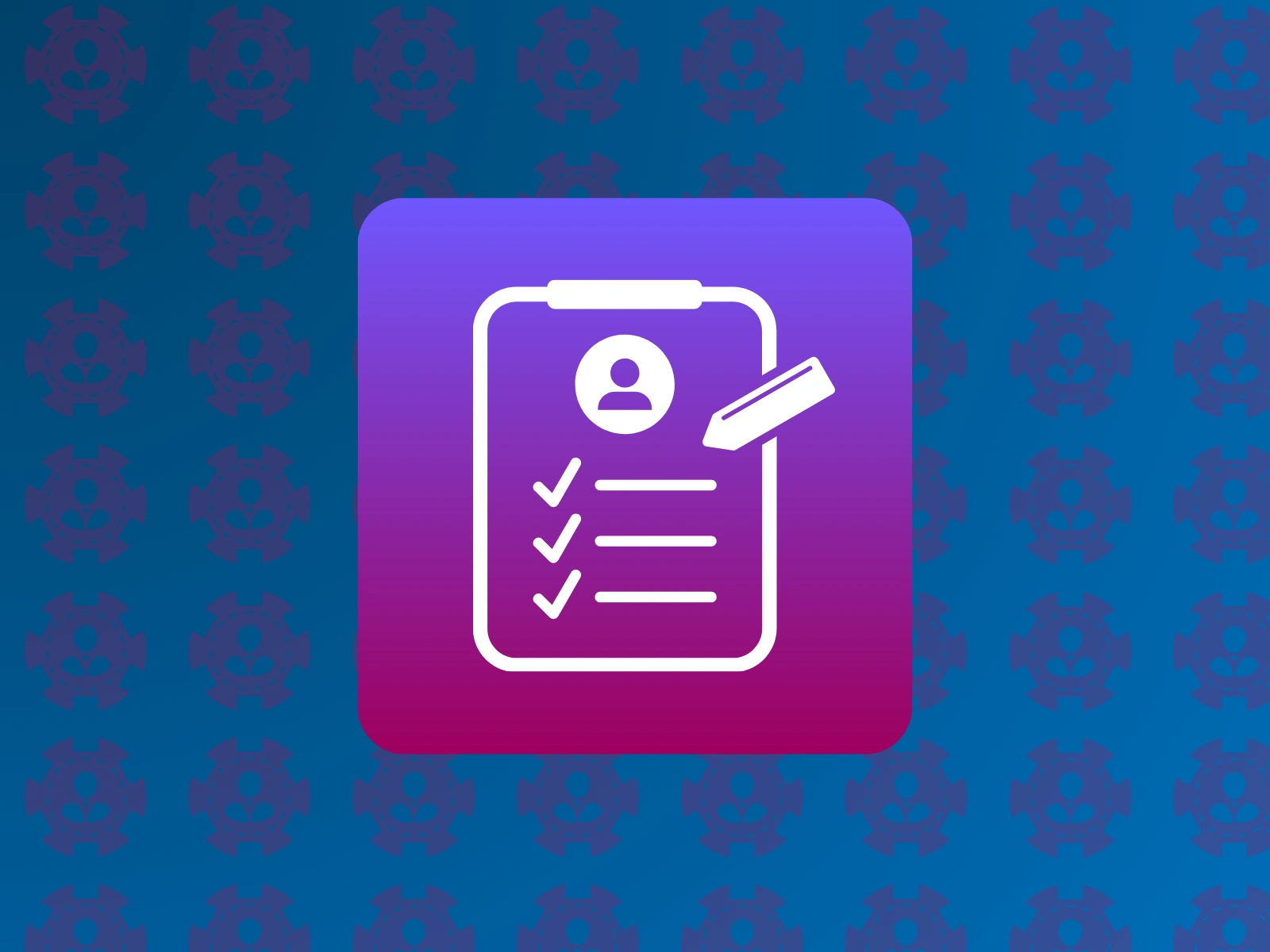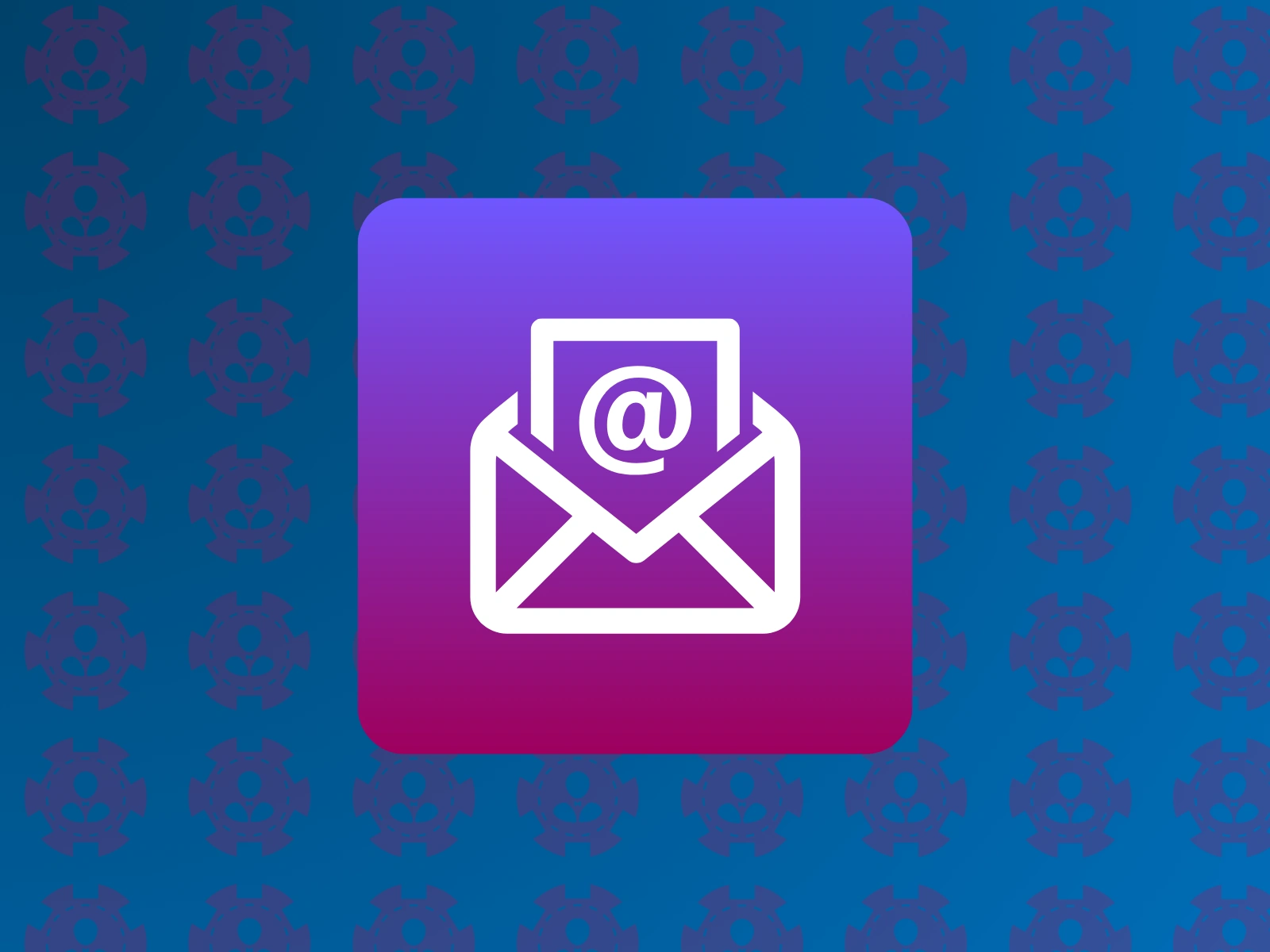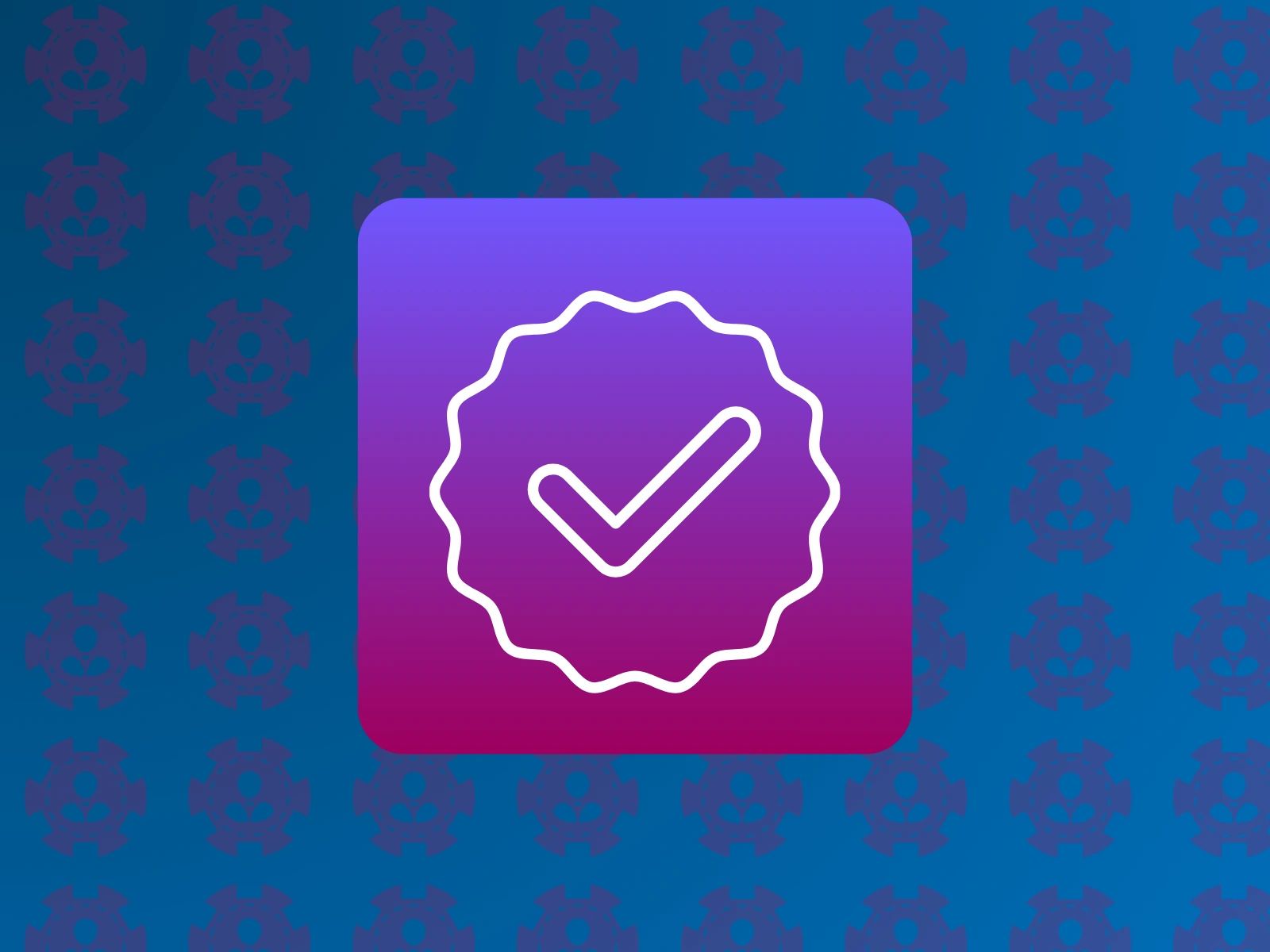Australian Online Casinos
Everything-for-travel.com – a site that collects information about the best online casinos in Australian. Here you will find detailed reviews of gambling sites, and you can also find safe and new online casinos to bet on. Read gaming guides and tips and familiarize yourself with responsible gaming policies before registering with a specific online casino.
The Best Online Casino in Australian
Top 5 Casinos in January
The casino operates under the State of Anjouan under the Computer Gaming Licensing Act 007 of 2005, with the license number ALSI-102310002-F15, which makes it available to players from Australian. The casino interface is available in English and several other languages, but there is no support for the Australian language, including in the online chat. The account can be topped up with cryptocurrencies, bank transfers and e-wallets. The Australian AUD is not supported, and the account can be opened in euros. Withdrawals are processed within 1-5 days from the moment the player submits the application.
The casino offers over 6,000 games in categories such as slots, megaways, live games, jackpots, bonus purchases and more. It is a good place for players who value a variety of games. There are also different types of bonuses available – welcome, top-up and sports.
Spinight has an Anjouan Gaming License and a website fully adapted to Australian players. The interface is available in Australian, and customer service also communicates in Australian. When creating an account, you can choose AUD as the currency of the player’s account. Among the available payment methods are international payment systems such as Neteller, Jeton, and the Australian BLIK. cryptocurrency tokens are also supported. The payment processing time depends on the selected payment method.
The casino offers a wide selection of games from over 90 top providers in categories such as Exclusive, Bonus Purchase, Megaways, Live and Instant Games. Additionally, there is an attractive bonus program – welcome bonuses and weekly casino top-ups, as well as a bonus store.
The casino is licensed by the Curacao Gaming Control Board – OGL/2024/181/0181. The site is available in English and several other languages, but there is no support in Australian. An account can only be opened in euros, and chat communication is in English. Available payment methods include Mastercard, Visa, Neteller, MiFinity, and Bitcoin. Payment processing time ranges from a few minutes to 3 days.
The casino offers over 4,000 games in categories such as live games, video slots, bonus purchases, table games, jackpots, megaways, casual games and more. The bonus offer includes promotions for new players, as well as reloads and tournaments with prize pools of up to AUD10,000,000.
Safe online casino licensed by the Curacao Gaming Control Board. The site is tailored to the needs of Australian players – you can open an account in AUD and choose the Australian interface language. Customer service in the online chat is also available in Australian, which ensures convenient communication. Among the supported payment systems you will find BLIK, UTORG, VISA, Mastercard, Skrill, Paysafecard and others.
The casino offers over 8,500 games in various categories, including slots, table games, live games, tournaments and mini games. Bonuses include welcome packages, reload bonuses, tournaments, wheel of fortune and other promotions.
The casino is safe for Australian players and operates under an offshore license issued by the Curaçao Gaming Control Board #OGL/2024/169/0146. The site is not available in Australian, and you can’t open an account in AUD. However, you can talk in Australian in the support chat. Supported payment systems include BinancePay, Bank Wire Transfer, Ethereum, Tether, Bitcoin, Bitcoin Cash, and the payment processing time is up to 24 hours.
The casino offers over 6,000 games in categories such as Slots, Jackpots, Megaways, Instant Games, Table Games, Live and more. Bonuses are available in the form of new and existing player promotions, tournaments, lotteries and other promotions.
What will you find on Everything-for-travel.com?
On Everything-for-travel.com you will find information about new online casinos , you will be able to check out the latest slots and other games, you will have access to various tools such as a bonus requirements calculator and many more. Below we present detailed information about all the possibilities that are available on Everything-for-travel.com.
The latest and objective information
On our Everything-for-travel.com platform, we primarily inform you about the latest and most accurate details in the online casino industry. Here’s how we achieve this:
- Constantly updating our lists. Our team is constantly reviewing and adding new casinos to our lists. We understand that the online casino landscape is constantly changing and we strive to include the latest entries so that you have access to a wide selection of options;
- Regular updates on bonus offers. Bonus offers can change frequently, so we guarantee that our information about these promotions is always up to date. We regularly update our content to reflect the latest bonuses and special offers available at different casinos;
- Objective reviews. Our reviews are created impartially and honestly. No online casino can influence or change our ratings. We base our reviews on thorough research and real user experiences to provide you with reliable information;
- Affiliate Transparency. We openly disclose that we receive compensation from some of the casinos featured through affiliate links. However, this does not affect the integrity of our reviews. We strive to ensure that you receive accurate information and the best possible casino experience. Building and maintaining your trust is our top priority.
Useful tools and resources for gambling completely free
We offer a suite of important gambling tools and resources to help you get the most out of your gaming experience, all completely free of charge. Here is a detailed description of what we offer:
- Bonus Calculators. Our bonus calculators are designed to help you assess the value of different casino bonuses. They allow you to calculate the exact amount you need to wager to meet the bonus requirements. Whether it’s a deposit bonus, free spins or other promotions, our calculators provide accurate data to help you make informed decisions and optimise your bonus strategy;
- Wagering Calculators. Wagering calculators are essential for understanding the requirements of bonuses and promotions. Our tool allows you to enter your bonus amount, turnover requirement and wagering requirement to determine how much you need to wager before the bonus becomes available for withdrawal. This helps you manage your bankroll effectively and ensures that you meet the bonus terms without taking unnecessary risks;
- Casino Search Tool. Our casino search tool is a comprehensive search engine that helps you find the best online casinos according to your preferences. You can filter your results by game selection, bonus offers, payment methods and more. This tool simplifies the process of finding a casino that meets your specific requirements, saves you time and provides you with access to the highest rated and most reliable options.
Unique filters to help you find the right casino
Everything-for-travel.com offers a variety of unique filters to help you find the perfect online casino that meets your preferences. With these tools, you can sort and compare casinos by several key factors:
- Bonus Amount. Filter casinos by their bonus amounts, including welcome offers, deposit bonuses and promotions. This allows you to quickly identify casinos with the most attractive bonus packages;
- Number of Free Spins. Choose casinos that offer generous free spins. This is ideal for players who want to maximize their chances at slot games without any additional costs;
- Game Selection. Sort casinos by the number and variety of games they offer. Whether you prefer a wide selection of slots, table games or live dealer games, you can find a casino that suits your interests;
- Additional Sorting Criteria. Explore various other criteria to refine your search. This could include filtering by payment methods, quality of customer service, mobile compatibility , etc.
By using these filters, you will be able to effectively find the casino that best suits your needs and preferences, providing a more personalized and enjoyable online casino gaming experience.
Legality of online casinos in Australian – regulations and law
Online gambling regulations in Australian have changed significantly over the past 20 years. Before 2009, Australian gambling regulations were quite liberal, and the market developed almost unchecked.
However, in 2009, a government corruption scandal occurred, after which a serious fight against online casinos began.
Under the leadership of Prime Minister Donald Tusk, a law was passed that made all forms of online gambling illegal, with the exception of sports betting.
The popularity of online gambling in Australian increased significantly around 2009, when many players started to switch to online platforms due to restrictions in traditional casinos. During this period, online sports betting became a legal alternative for Australian players, which led to an increase in interest in online gaming.
Currently, online casinos in Australian can only legally operate through a state monopoly run by Totalizator Sportowy. This means that Total Casino is the only legal online casino in the country, and other forms of online gambling are considered illegal.
However, many Australian players still use foreign websites licensed in jurisdictions such as Curacao or Malta (MGA), which is contrary to Australian legislation. Although the use of such websites is technically prohibited, Australian authorities do not always effectively control this situation, leading to legal and tax risks for players.
Legal uncertainty has arisen due to the conflict between Australian legislation and EU rules. Australian regulations restrict online casinos, while the EU supports the principle of free movement of services. This creates complicated situations for players who may not know which law to apply. In the future, changes in legislation are possible, including market liberalization and a reduction of the state monopoly on gambling.
Compared to other EU countries, Australian regulations are much more stringent. For example, countries like the UK and Malta have a more open market, where private companies can freely obtain licenses. In Australian, on the other hand, the state strictly controls the market, limiting competition.
The social and economic consequences of gambling in Australian include the risk of addiction and the associated increase in crime. However, the country benefits from increasing tax revenues from legal gaming, particularly in the area of sports betting. In order to counteract addiction problems, the government and casino operators are implementing responsible gaming measures aimed at minimizing harm, such as stake limits and access to self-help programs.
Are Casino Games Fair – Who Regulates Fairness?
In the world of online casinos, the fairness of games is a key aspect to ensuring reliability and player trust. The fairness of games is ensured by several external organizations specializing in testing and auditing gaming software:
- eCOGRA (eCommerce Online Gaming Regulation and Assurance). One of the most recognized organizations for testing and certifying online casinos. They check whether games meet established standards of fairness and randomness and provide reports on compliance with player protection rules;
- iTech Labs. This organization provides gambling software testing services and gaming system certification. iTech Labs checks random number generators (RNGs) and gaming algorithms to ensure they comply with fairness standards;
- GLI (Gaming Laboratories International). Another respected company specializing in testing and certifying gaming systems and software. They conduct an independent audit of RNGs and other gaming mechanics to ensure they are fair and reliable.
The Concept of RNG and Its Relationship to Game Fairness Testing
A random number generator (RNG) is a key element that ensures the randomness of outcomes in online casino games. An RNG is used to generate random numbers that determine the outcomes of games, such as slot spins or poker card deals.
RNG testing is an essential part of the gaming auditing process as it ensures that game outcomes are not manipulated and are truly random.
Why Can Players Trust These Organizations?
Third-party gaming testing and auditing organizations have strict standards and protocols to ensure fairness and transparency. These organizations are independent of the casinos and conduct their audits with a high degree of rigor and objectivity. Their reputation and recognition in the gaming industry, as well as their commitment to fairness standards, provide additional assurance to players.
Will My Money Be Safe at the Casino?
When you play at online casinos, the security of your funds and personal information is a priority. Licensed online casinos must adhere to certain security standards to ensure the protection of players. Here are the main ones:
- Seal of Approval. This is a mark given by independent organizations that check the honesty and trustworthiness of the casino. Having such a mark indicates that the casino has passed an independent audit and meets established security standards;
- SSL (Secure Sockets Layer). This is an encryption technology that provides protection for data transferred between your device and the casino server. SSL encrypts your personal information and financial data, making it inaccessible to third parties;
- Certification from online casino testing agencies. Certification agencies such as eCOGRA, iTech Labs, and GLI conduct inspections and audits of online casino systems, including testing of random number generators (RNGs) and other elements of gaming software. Having a certificate from such agencies confirms that the casino meets fairness and security requirements.
These standards and certifications ensure that your money and personal information will be protected when playing at online casinos. Licensed casinos that adhere to these requirements provide a high level of security and transparency, giving you peace of mind that your funds are safe.
Choose Only Licensed Casinos
Playing in unlicensed online casinos involves risks, such as the lack of guarantees for the fairness of the games, insufficient protection of personal and financial data, as well as the possibility of fraud and refusal of payouts. To make sure that the casino is licensed, check the information on its official website or use our top lists, where we check and list only licensed casinos, ensuring your safety and trust.
Responsible Gaming
Responsible gaming is a mandatory requirement for licensed and reliable online casinos. Such casinos offer players tools and resources that help control gambling and prevent gambling addiction. Among these tools are:
- Deposit Limits. The ability to set limits on the amount you can deposit into your player account;
- Bet Limits. A feature that allows you to set limits on the bets you can place in games;
- Time Limits. Option to set limits on time spent playing;
- Self-Exclusion Features: The ability to temporarily or permanently block your access to the casino if you feel that gambling is starting to negatively impact your life.
Licensed casinos also offer information about resources and support for those struggling with gambling problems, including links to organizations offering help and advice. This provides protection and support for players, promoting a safe and controlled gaming process.
Online Casinos vs. Land-based Casinos
Online casinos offer convenience and accessibility, allowing you to play any game at any time and from anywhere in the world, while land-based casinos attract with their atmosphere and social interaction.
Online casinos
- Promotions and bonuses. Playing in a regular land-based casino, you can count on a regular VIP program at most, but only with a very large turnover. Online casinos, on the other hand, literally bombard players with bonuses, offering bonuses right from registration. A deposit bonus and free spins for the first deposit are standard. And the online casinos reviewed and selected by us offer even more.
- A huge selection of games. While regular casinos in cities in Australian have only a dozen or so to several dozen slot machines in one location, in online casinos we can find thousands of machines. There are well over a hundred developers on the market who deal with creating slot software. Such a large competition is great news for players, who have a huge selection. Only on the Internet can you play such a huge number of slot machines with different variability and rules and in many styles.
- Not just slots. Online casinos often offer not only slots, but also many other types of games. These include bingo-style games, roulette, and various card games, including those with a live dealer. On some sites, we can even place sports bets.
Land-based casinos
Advantages of playing in land-based casinos:
- Atmosphere and Experience. Land-based casinos provide a unique atmosphere that is hard to replicate in online gaming. The bright lights, the sounds of slot machines, and the interactions with other players create an unforgettable gaming experience;
- Social Interaction. In land-based casinos, you can chat with other players and dealers, which adds a social element to the game and makes the process more engaging. It also gives you the opportunity to observe other players’ actions and chat with them, which can improve your understanding of the games and strategies;
- Physical Interaction with Games. Many players enjoy physical interaction with games, whether it be spinning roulette or rolling the dice in a casino. This sense of involvement and control over the game is often experienced as more satisfying;
- Events and Entertainment. Land-based casinos often offer various entertainment events, such as concerts, shows and restaurants, which makes a visit to the casino not only a game, but also a full-fledged entertainment;
- Instant Withdrawals. If you win, you can withdraw your money immediately, without having to wait for the transaction to be processed, as is the case with online casinos.
Land-based casinos provide a unique gaming experience that is difficult to fully replicate in a virtual environment, and remain popular with those who value the social and physical aspects of gaming.
Foreign casinos in Australian – is it legal to play there?
In Australian, online gambling is regulated by the Gambling Act, which sets the rules for legal gambling activities. According to Australian legislation, only operators licensed by the Australian Ministry of Finance are allowed to offer online gambling services to Australian residents.
This means that foreign casinos that do not have a Australian license technically operate illegally in Australian.
However, Australian players can still access and play at these foreign online casinos. The law focuses on regulating operators, not players.
This means that while it is against the law for illegal foreign operators to offer gambling services to Australian players, there are no specific legal sanctions for players who choose to play on these offshore sites.
Players should be cautious and aware of the risks associated with playing at offshore casinos, such as a lack of consumer protection and potential withdrawal issues. To be safe, it is recommended to choose casinos with a good reputation and reliable customer service.
Best Overseas Casinos 2025
| Casino | License | Bonus |
|---|---|---|
| Playio | Curacao eGaming | Bonus 100% Up to AUD 2,250 + 200 free spins |
| Janusz Casino | Curacao eGaming | Bonus 100% up to AUD 1,250 + 500 free spins |
| Pribet | Curacao eGaming | 100% Bonus up to AUD1000 + 150 Free Spins |
| Posido | Estonian Tax and Customs Board | Bonus 100% Up to AUD 2,250 + 200 Free Spins |
| Olympusbet | Curacao eGaming | 100% Bonus Up To AUD500 + 100 Free Spins |
| HotSlots | Curacao eGaming | 2 x Bonus 100% up to AUD 1000 + 100 free spins |
| Nova Jackpot | Curacao eGaming | 100% Bonus up to AUD 2,250 + 200 Free Spins |
| Legiano | Curacao eGaming | 100% up to AUD 2,250 + 200 Free Spins |
| Lex Casino | Curacao eGaming | 150% Bonus up to AUD600 + 400 Free Spins |
| Spinline Casino | Curacao eGaming | Bonus up to AUD 8,705 + 800 free spins |
Are Offshore Casinos Safe?
Offshore casinos can be safe, but this depends on whether they have an authorized license. Casinos that have licenses from respected regulatory bodies usually provide a high level of security and fairness of games. Offshore casino security conditions:
- Having a reputable license. For an overseas casino to be considered safe, it must have a license from an authoritative gambling regulator. This confirms that the casino has undergone an independent audit to ensure that it adheres to fairness and security standards;
- Transparency and reliability. Casinos with a good reputation usually ensure the transparency of their operations, the fairness of the games and the protection of customer data.
Among popular offshore licenses with a positive reputation, the following can be distinguished:
- MGA (Malta Gaming Authority). It is one of the most respected regulators in the gambling industry. The MGA license guarantees strict requirements regarding security, fairness of games and protection of consumer rights;
- UKGC (UK Gambling Commission). Known for its high standards of regulation and player protection. The UKGC license confirms that the casino meets strict requirements for fairness and data protection;
- Curacao eGaming. The license from the government of Curacao is also widely used, but its reputation is not as high as the MGA and UKGC. Although many casinos with a Curacao license offer safe services, this regulator has less stringent requirements and a lower level of control.
Why is it worth playing in foreign casinos?
For players from Australian, there are several important reasons why it is worth considering playing in foreign casinos:
- ✅ More generous bonuses. Foreign casinos often offer more favorable bonuses and promotions compared to Australian casinos. These can be generous welcome bonuses, large deposit bonuses, free spins and other attractive offers that will help increase your bankroll and prolong the pleasure of playing;
- ✅ Wide selection of casino games. Foreign casinos usually offer a more diverse selection of games, including many slots, table games, live casinos and other unique games. This gives you the opportunity to discover new and interesting games that may not be available in Australian casinos;
- ✅ Acceptance of cryptocurrencies and other convenient payment methods. Many offshore casinos accept cryptocurrencies such as Bitcoin, Ethereum and others, which allows for fast and safe transactions. In addition, they often offer various convenient payment methods, such as e-wallets and mobile payments, which facilitates the process of depositing and withdrawing funds.
Things to Consider Before Joining an Offshore Casino
If you are planning to play at an online casino that is regulated by jurisdictions other than Australian authorities, it is worth paying attention to the following issues:
- ⚠️ Casino Bonuses Can Have High Wagering Requirements. Often, offshore casino bonuses come with high wagering requirements, meaning you will have to wager a certain amount of money before you can withdraw any winnings you have earned from the bonus. This can make it harder to actually benefit from the bonuses and increases the risk of losing your funds;
- ⚠️ Taxation of Winnings. In the case of winnings in a foreign casino, taxation may differ from that which applies to winnings from Australian casinos. In Australian, gambling winnings are subject to taxation, and you must report your winnings. When winnings in a foreign casino, it is important to consult a tax advisor to understand how to pay taxes correctly and avoid possible problems with the tax authorities;
- ⚠️ Responsible Gaming and Self-Exclusion Programs May Not Be Available. Offshore casinos may not offer the responsible gaming and self-exclusion programs that are available at licensed Australian casinos. This means that you will need to rely on your own discipline and set your own gaming limits. It is also worth contacting third party organizations that offer support and assistance in managing gambling addiction;
- ⚠️ No Help from Australian Authorities in Case of Disputes. In the event of a dispute between a player and an offshore casino, Australian authorities may not be able to intervene or provide assistance. This means that resolving disputes and obtaining a fair settlement will depend on the casino itself and the legal mechanisms available in the jurisdiction where it is registered.
How to choose a good online casino?
Choosing the right online casino can be a daunting task given the huge number of options available. In this section, we will discuss the key factors that will help you determine which casino is worthy of your trust and will be a great place to play.
Read our casino reviews
Our casino reviews are exclusively for licensed online casinos, which ensures a high level of trustworthiness and security. We thoroughly check each casino for compliance with fairness and security standards before including them in our reviews.
Our reviews contain all the necessary information that every player should know before registering at a casino.
There you will find step-by-step instructions for registration, information on the time required to complete the KYC (Know Your Customer) procedure, as well as detailed steps for receiving the welcome bonus and other important aspects.
We strive to provide you with a full understanding of each casino so you can make an informed choice and start playing with confidence.
Find a bonus with the right wagering requirements
A high bonus value is not always an advantage. When choosing a bonus, it is important to consider not only its value, but also the conditions associated with its use. A properly selected bonus can significantly improve your gaming experience, but only if its conditions are favorable to you.
Always check the bonus terms and conditions. Our casino and bonus reviews contain the full terms and conditions of each bonus, including the wagering requirements. This will help you understand exactly what you need to do to withdraw your winnings from your bonus funds.
Breakdown of turnover requirements:
- Low turnover requirements. They usually range from 1x to 5x the bonus value. These conditions are considered the most beneficial for average players, as they are easy to meet and allow you to get your money back quickly;
- Average Wagering Requirements: These typically range from 6x to 15x the bonus value. These are more standard terms that require a bit more effort to meet, but are still affordable for most players;
- High turnover requirements. They range from 16x to 50x or more of the bonus value. These conditions can be difficult to meet, especially for casual players. However, such bonuses can be attractive to high rollers who are willing to play with large sums of money and strive for higher winnings.
Check available payment methods
Before you start playing at an online casino, it is important to check what payment methods are available and how well they suit your preferences. Here are the key things to consider:
- Check Preferred Payment Method Availability. Make sure that the selected casino accepts the payment method you prefer. This information can be found in our casino reviews or on the official casino website;
- Check Potential Fees. Find out if there are any additional fees for deposits and/or withdrawals using your chosen payment method. This will help you avoid unexpected costs and plan your budget more effectively;
- Payment Speed. Rate how quickly your deposits and withdrawals are processed using your chosen payment method. Fast account top-ups and timely withdrawals can significantly improve your gaming experience;
- Deposit and Withdrawal Methods. Check what methods are available for deposits and withdrawals. One limit may be comfortable for a regular player, but it may be too low for a highroller who prefers to play with large sums. Therefore, it is important to choose a casino that offers the right limits and methods to suit your playing style.
Check usability and mobile compatibility
When choosing an online casino, it is important to pay attention to its usability and compatibility with mobile devices. Here are the key aspects to consider:
- Intuitive interface. Assess how easy it is to navigate the casino site. A well-designed interface should be intuitive so that you can quickly find the features and games you need. This is especially important for newbies who need simplicity and clarity when navigating the site;
- Mobile Compatibility: Make sure the casino site works well on mobile devices such as smartphones and tablets. This includes a responsive design that automatically adjusts to the screen size of your device, ensuring a comfortable experience;
- Availability of dedicated apps. Bonus points go to casinos that offer dedicated apps for iOS and Android. These apps can enhance your gaming experience by providing faster access to games, bonuses, and casino features directly from your mobile device.
Evaluating these aspects will allow you to choose a casino that offers not only high-quality gaming offers, but also a convenient and accessible interface on both desktop and mobile devices.
We also offer casino bonuses with high wagering requirements for those who prefer to play for large sums and spend more time playing. The final choice depends on your personal preferences and playing style. It is important to evaluate the bonus conditions and choose the option that best suits your playing style and financial possibilities.
Choose a Casino with the Right Customer Support
When choosing an online casino, it is important to consider the quality and availability of customer support. Here are the key points to look for:
- Availability of support in your native language. Make sure that the casino’s customer support offers help in your native language, in this case Australian. This will ensure a more comfortable interaction and help resolve any issues or questions more quickly;
- Support Availability: Check if the casino’s customer service is available 24/7, seven days a week. Consistent support availability is important for resolving issues quickly, especially if you play at different times of the day.
Check what other communication channels and resources are available beyond phone and email. Useful additional resources may include:
- FAQ. A section with answers to frequently asked questions that can help you quickly find the information you need;
- Live Chat. The ability to talk to a customer service representative in real time to quickly resolve issues;
- Help Center. A detailed section with guides, articles and instructions on various aspects of playing and using the casino.
Which casino is best for you?
What game do you most want to play?
Select one of the options presented
What is your favorite type of game?
Select one of the options presented
What is your preferred payout time?
Select one of the options presented
What is your device of choice?
Select one of the options presented
Choosing the Right Casino Bonus
Choosing the right bonus can have a significant impact on your gaming experience. In this section, we will discuss how to choose a bonus that best suits your needs and playing style. Pay attention to important aspects such as wagering requirements, terms and conditions, and whether it suits your playing style.
Types of Casino Bonuses
Most often, Australian players can encounter the following types of bonuses in online casinos :
| Free Spins | Free spins on slots that allow you to win without investment. Suitable for novices and slot lovers. |
| Welcome Bonuses | A first deposit bonus for new players that doubles the amount of your deposit. Perfect for new players. |
| No Deposit Bonuses | A no deposit bonus that lets you play for free with the possibility of winning. Good for those who want to test the casino without risk. |
| Non-sticky Bonuses | Bonuses that are only activated after the deposit has been used. Suitable for experienced players who want to minimize risk. |
| Reload Bonuses | Bonuses on subsequent deposits for regular players. Useful for players who regularly top up their balance. |
| Cashback Bonuses | A refund of part of the funds lost. Suitable for players who often bet large amounts. |
Things to check in the bonus – checklist
When choosing a casino bonus, it’s important to consider a few key factors. This checklist will help you understand what to look for to get the most bang for your buck:
- Wagering Requirements. Wagering requirements are the number of times you need to wager your bonus (and/or deposit) amount before you can withdraw your winnings. For example, if you have a £1,000 bonus and the wagering requirement is 20x, you need to wager a total of £20,000 (£1,000 x 20) before you can withdraw your winnings. Low requirements – 1x to 5x; Medium – 6x to 15x. Requirements above 15x are considered high and may be difficult to meet;
- Minimum Deposit. The amount you must deposit to activate the bonus. For example, if the minimum deposit to receive a bonus is AUD 100, you must deposit at least that amount to receive the bonus. Low – between AUD 50 and AUD 100; Medium – between AUD 101 and AUD 300; High – above AUD 300. Typically, the higher the minimum deposit to activate the bonus, the bigger the bonus, but the wagering requirements may be higher;
- Difference from Minimum Deposit for Games. The minimum deposit to participate in games may differ from the minimum deposit for a bonus;
- Deadlines. This defines how long the bonus is active and when the wagering requirements must be met. If the bonus is valid for 7 days, it means that you must use it within that time. If the wagering requirements must be met within 30 days, you must do so before the deadline. A reasonable time to activate the bonus is 7 to 14 days; To meet the requirements – 30 to 60 days. Deadlines of less than 7 days are considered too short;
- Game Restrictions. These specify which games bonus funds can be used on or which games count towards the wagering requirement. For example, a bonus may only be valid on slots, while table game wagers may not count towards the wagering requirement;
- Payment Method Restrictions. Some bonuses may not be available using certain payment methods. For example, a bonus may be invalid if you have deposited via Skrill or Neteller. This is because these methods are often excluded from bonus promotions;
- Maximum Win and Withdrawal Limitations. These limits set the maximum amount of winnings or withdrawals you can make from your bonus funds. For example, if your maximum bonus win is £5,000, you will not be able to withdraw more than this amount, even if you win more.
These points will help you better understand the bonus terms and choose the offer that best suits your expectations and gaming preferences.
Best Bonus Offers in 2025
| Casino | Bonus | ⚠️ Turnover Requirement |
|---|---|---|
| Lex Casino | 150% Bonus up to AUD600 + 400 Free Spins | 45x |
| 22Bet | Bonus 100% Up to AUD 1,250 | 50x |
| 1Go | Bonus 150% up to AUD600 | 45x |
| Spinline | Bonus up to AUD 8,705 + + 800 free spins | 40x |
| Monro | 150% Bonus up to AUD600 + 400 Free Spins | 45x |
| Starda Casino | Bonus 150% up to AUD600 | 45x |
How to Create an Online Casino Account? – Step-by-step guide
Signing up for an online casino account usually only takes a few minutes and is relatively easy, especially if you follow our step-by-step guide. In this section, we’ll go over what it takes to set up an account and share some important tips for new players. Before you start, make sure you:
- You have chosen a licensed and reliable casino;
- You have prepared the necessary documents for identity verification (passport, driving license, etc.);
- You have read the bonus terms and wagering requirements.
The process of creating a new account includes the following steps:

Casino selection and registration.
Choose an online casino that meets your requirements and preferences using our rankings. Go to its official website and find the registration or account creation button. Fill in basic details such as name, email address, and password.

Review the terms and conditions.
Read the casino rules, bonus terms and wagering requirements. This will help you avoid any unpleasant surprises and ensure you understand all the terms and conditions of the game and bonuses.

Confirm your email address.
After registering, you will receive a message to the email address you provided confirming your registration. Open this message and follow the instructions to activate your account.

Identity verification.
Go to the verification section (KYC) on the casino website and upload copies of the necessary documents, such as a passport or driver’s license. This is needed to confirm your identity and prevent fraud.

First deposit payment.
Choose a convenient payment method and make your first deposit, which may be required to activate the bonus or start playing. Make sure that the payment method is supported by the casino and does not involve additional fees.
What is KYC?
KYC (Know Your Customer) – is the process of verifying the player’s personal data in order to confirm their identity. The main features of this verification include:
- KYC is closely related to AML (Anti-Money Laundering). Both processes help prevent financial crimes and fraud;
- The Casino requires a KYC procedure to ensure security and prevent fraud, as well as to comply with legal requirements;
- Typically, to verify identity, players must provide a passport, driving license or other identification documents, as well as documents proving their residential address;
- The KYC process can take from a few hours to a few days, depending on the casino and the complexity of the verification.
Never send documents to an unregulated or unlicensed casino. This can lead to identity theft and other problems.
How to make a deposit at a casino?
Making a deposit at an online casino is a simple and quick process that usually takes only a few minutes. You select the appropriate payment method , enter the deposit amount, and confirm the transaction. The processing time of a deposit can vary from instant to a few hours, depending on the method and casino you choose.
The best payment methods for Australian players
The best Australian casinos often offer a variety of payment methods. The most popular among players include:
- Credit and Debit Cards (Visa, Mastercard). They are one of the most commonly used and convenient payment methods. They allow you to easily deposit money into your casino account. Withdrawal times are usually 1 to 5 business days;
- E-Wallets ( Skrill , Neteller , PayPal , Payz , MuchBetter ). They offer fast and safe ways to deposit and withdraw funds. These services allow you to make transactions without directly using your bank details. Usually, the withdrawal time is from 0 to 24 hours;
- Prepaid cards ( Paysafecard ). They allow you to deposit money into the casino without having to contact your bank. They provide anonymity and security. They do not support withdrawals, they are only suitable for deposits;
- Mobile Payments ( Blik ). They allow you to quickly and conveniently deposit funds via a mobile application. Suitable for users who prefer mobile transactions. The withdrawal time is usually from 1 to 5 business days (there may be restrictions on the withdrawal of funds);
- cryptocurrencies . Such digital tokens as Bitcoin and Ethereum provide anonymous and secure transactions. Suitable for players who prefer digital currencies. Withdrawal times are usually 0 to 24 hours.
How to withdraw casino winnings?
To successfully withdraw your winnings from an online casino, you need to follow a few simple steps. First, make sure you have passed the KYC (Know Your Customer) procedure, especially if you plan to withdraw large amounts. Without identity verification, you may have problems withdrawing funds. Then, select the appropriate withdrawal method, follow the casino’s instructions, and wait for your request to be processed.
What do you need to know before withdrawing money?
If you want to withdraw your winnings from an online casino, we recommend that you familiarize yourself with the following aspects beforehand. This will allow you to complete the transaction without major problems:
- KYC verification. Identity confirmation procedure. Without successful verification, you will not be able to withdraw large amounts. Usually, verification takes from several hours to several days;
- Wagering Requirements. This is how many times you need to wager your bonus funds before you can withdraw them. Typically this is between 1x and 15x the bonus amount. Higher wagering requirements can make it harder to meet the terms;
- Withdrawal Limits. Sets the maximum amount that can be withdrawn within a specified period of time. Typically between 1,000 and 7,000 AUD per week. Limits may vary by casino;
- Fees. Costs that may be charged for withdrawal transactions. Typically 1% to 5% of the withdrawal amount or a flat fee, depending on the payment method;
- Withdrawal Time. Defines the time it takes to process and receive funds after a request. Usually from 1 to 5 business days. E-wallets can process transactions faster (up to 24 hours), cryptocurrency payments arrive almost instantly;
- Account Limits. These define the maximum amounts that can be held or withdrawn from your gaming account. The limits can vary, but are usually between 10,000 and 50,000 AUD per month.
Comparison of the best payment methods to use in Australian casinos
| Payment Method | ⚡️ Payout speed | Best Casino for Payment Method |
|---|---|---|
| VISA | 1-5 days | FairSpin |
| Mastercard | 1-5 days | Betsafe |
| Skrill | From 0 to 24 hours | Pribet |
| Neteller | From 0 to 24 hours | Posido |
| PayPal | From 0 to 24 hours | Betsson |
| Payz | From 0 to 24 hours | GGBet |
| MuchBetter | From 0 to 24 hours | Vulcan Vegas |
| BLIK | 1-5 days | Janusz |
| crypto | From 0 to 24 hours | Legiano |
Do you have to pay tax on casino winnings in Australian?
Winnings are subject to gambling tax, which varies depending on the type of game. For casinos (including online and land-based), a tax rate of 50% applies. There is no separate income tax on gambling winnings.
Details:
- Tax type – Gambling tax;
- Tax rate. For casinos — 50%, for sports betting — 12%, for lotteries — from 10% to 25%;
- Foreign Casinos. Winnings in unlicensed foreign casinos in Australian are considered illegal and players may face penalties. In the case of playing on licensed foreign platforms, taxation may depend on double taxation treaties.
Australian strictly regulates gambling, and the monopoly on online casinos belongs to Totalizator Sportowy. Playing on unlicensed foreign sites can lead to legal consequences. It is recommended to follow changes in regulations and use only licensed sources.
Casino Games – Choosing the Right Game for You
Australian players in online casinos have access to a wide selection of games that vary from classic slots to modern live games. Among the most popular games are slots that offer exciting bonus features and various themes. More and more Australian players are becoming interested in games with live dealers, such as live casino, where they can interact with real dealers in real time.
Slots
The most popular category of games in Australian casinos are online slots . Such games are further divided into subcategories:
- Video slots. Modern slot machines with high-quality graphics and animations. Players place bets and start spinning the reels, winnings are generated by matching symbols on active lines. Popular games include Starburst, Gonzo’s Quest, Book of Dead;
- Classic Slots. They imitate traditional 3-reel slot machines with simple winning combinations. Players spin the reels and win when matching symbols on paylines. The brightest examples in this category are Mega Joker, Lucky 7, Fruit Party;
- Progressive Jackpot Slots. These offer a jackpot that grows with every bet placed by players. Look out for games like Mega Moolah, Hall of Gods, Divine Fortune.
Game style and theme
Ordinary slot machines, still placed in brick-and-mortar establishments, often do not have any specific game theme. They simply draw classic casino symbols. However, new games have their own storyline, style, and sometimes even intro. If you are interested in games in the style of fantasy, horror, or crime series from the 80s, you will easily find something for yourself. Some games are even based on original film licenses, such as Bruce Lee, Game of Thrones, or Ghostbusters. Fans will find something for themselves here.
Rules of the game
What’s more, not all slot machines are based on the same scheme of rotating reels 3 by 5 fields. Game creators compete in creating games with original, but still understandable rules. We will find here many variants such as symbols falling in a cascade, a game played simultaneously on two boards or symbols in the shape of hexagons. When playing a game with original rules, it is worth reading its instructions beforehand.
Graphics and sound effects
Slots have undergone a huge transformation in just the last few years, now offering amazing graphics, a great soundtrack, and immersive sound effects. All from a web browser. Not only are these slots much more engaging, but they are also a lot of fun.
Additional functionalities
New slot machines are becoming more and more multimedia, which includes many additional features. In some slots we have mini games that diversify the gameplay. In turn, in other slots we can buy additional paid features, for example an automatically appearing Wild symbol. Most often, buying these features does not affect the RTP, but can speed up the gameplay.
Best Slots Casinos in 2025
| Types of Slot Games | Best Casino | The most popular slot game |
|---|---|---|
| Classic Slots | Monro Casino | Lucky Streak 3 |
| Video slots | Nova Jackpot | Forge of Olympus |
| Progressive Jackpot Slots | SpinsBro Casino | 24 Coins |
| 3D Slots | Starda Casino | Gates of Olympus 1000 |
| Fruit Slots | GGBet | Royal Fruits 5: Hold ‘n’ Link |
Casino games
In Australian casinos, you can also often find classic table games that are popular in stationary gambling halls. These include:
- Blackjack . A game with a high return to player (RTP). The goal is to get 21 points or a value close to it without exceeding it (21 Blackjack, Classic Blackjack);
- Roulette . A game based on luck in which players place bets on numbers or colors on a spinning wheel (European Roulette, American Roulette);
- Baccarat . A game with simple rules in which players bet on which hand (player’s or banker’s) will be closer to 9 (Punto Banco, Chemin de Fer);
- Poker . A card game in which players compete for the best combination of cards. It has many variants, including Texas Hold’em and Omaha;
- Craps. A game with two dice in which players place bets on the results of the rolls (Classic Craps, Vegas Craps);
- Bingo. A game in which players fill in cards with numbers, marking them as they are drawn. The goal is to complete specific combinations (75-ball Bingo, 90-ball Bingo).
Best Table Games Casinos in 2025
| Casino | Table game | Most popular games |
|---|---|---|
| Vavada Casino | Blackjack | Infinite Blackjack, Power Blackjack, Quantum Blackjack |
| Lemon Casino | Roulette | Speed Roulette, Immersive Roulette, Auto-Roulette |
| Verde Casino | Baccarat | Baccarat Lobby, Prive Lounge Baccarat, Speed Baccarat |
| BC.Game | Poker | Roulette Poker, Russian Poker, Poker Lobby |
| Vasamba | Craps | Craps Live, Craps First Person |
| Vulcan Vegas | Bingo | Bingo Soccer, Bingolicious, Bingo Adventure, Bingo Carnaval |
Casino Game Developers
There are a huge number of online slot developers , which currently exceeds a hundred, such as Microgaming, Novomatic, NetEnt, Apollo Games , EGT , Playtech and Wazdan .
Microgaming
This British company calls itself a pioneer of online casinos and has been on the market since the 1990s. The studio releases as many as half a dozen new slots per month. Players know Microgaming for hits such as Roman Power, Arthur’s Gold and Age of Conquest.
Novomatic
Novomatic is a German company that offers both classic electronic slots and online games. Among the most interesting games of this Novomatic listed on the Frankfurt Stock Exchange, you can find, for example, Valkyrie Star, Savage Hunt or Mega Bonus Joker.
Pragmatic Play
Pragmatic Play – is a developer that has a license in as many as 20 locations and delivers slots to almost every major online casino. Pragmatic Play’s hits include the adventure slot series about the archaeologist John Hunter or the classic slot Wolf Gold.
NetEnt
This is an abbreviation of Net Entertainment – a company that is particularly well-known for its live games such as Blitz Blackjack Silver and VIP Roulette Live. It is one of the few operators that has the resources and know-how to run so many live dealer games.
Evolution Gaming
This is the second largest live gaming operator. Not only does it provide addictive roulettes or blackjacks in many varieties, such as Blackjack Party and Power Blackjack , but it also offers much more original games. With Evolution Gaming you can play the dynamic Lightning Dice or even the licensed Monopoly Live.
This is just a small part of the developers who provide games to online casinos. It is worth checking what slots are available in a given casino by browsing their reviews on our portal .
| Game Operator | Most popular games |
|---|---|
| Microgaming | Thunderstruck, Avalon, Game of Thrones, Jurassic World, Dragonz, and Playboy Gold |
| Novomatic | Lucky Lady’s Charm Deluxe, Book of Ra Deluxe, Columbus, Dolphin’s Pearl Deluxe |
| Pragmatic Play | Wolf Gold, The Dog House, Heat, Gold |
| NetEnt | Aliens, Gonzo’s Quest, Starburst, Jack & the Beanstalk, Geisha Wonders, Dracula, Blood Suckers |
Live Casino Games vs RNG Games – A Comparison
Live casinos offer games where real dealers play in real time via video streams. Players can interact with dealers and other participants via chat, creating the illusion of being in a real casino. These games are run by live people, not random number generators (RNGs).
To ensure the fairness of live casino games , it is important to check the casino’s licensing and independent auditors such as eCOGRA who carry out fairness tests.
| Criterion | Live Casino | RNG Games |
|---|---|---|
| Game Method | The game is played with a real live dealer. Players can interact with the dealer and other participants. | The game is managed by a random number generator (RNG) that decides the outcome of each round. |
| Justice | It is monitored by independent auditors and regulators. Players can observe the dealer’s actions. | The RNG and casino license are regularly checked. Licensed casinos are regularly tested for fairness. |
| Impressions | This is closer to a real casino. Ability to talk to the dealer and other players. | The games are completely virtual, with no live interaction. |
| Variety of games | It is usually limited to classic games: roulette, blackjack, baccarat. | They offer a wide selection including slots, video poker, table games and more. |
| ⚡️ Game speed | Games may be slower due to interaction with the dealer and other players. | They are usually faster because the process is automated. |
| ✅ Availability | Games are available for a limited time and may vary depending on time of day. | They are available 24 hours a day, 7 days a week, without interruption. |
| Strategies and opportunities | Interacting with the dealer allows you to apply live strategies and discuss moves. | All strategies depend on RNG algorithms and there is no live interaction. |
The Most Important Things to Know About Online Casino Gaming
When playing at an online casino, it is important to understand a few key concepts that will help you make informed decisions and improve your chances of winning. Let’s consider three main aspects: RTP, House Edge, and volatility.
RTP
RTP (Return to Player) is the percentage of all bets that the casino returns to players in the form of winnings over time. For example, if a slot has an RTP of 96%, this means that on average for every £100 wagered, the player receives £96 back. RTP helps to assess how profitable a particular slot or game is.
High RTP games:
- Mega Joker – RTP 99%;
- Blood Suckers – RTP 98%;
- Jackpot 6000 – RTP 98.9%;
- Ugga Bugga – RTP 99.07%;
- Starmania – RTP 97.87%.
House Edge
The House Edge is the percentage of your bet that the casino expects to keep as profit. This is the opposite of RTP. If the House Edge is 4%, this means that for every $100 bet, the casino will keep $4 over time, and players will keep $96.
Variability
Volatility describes the risk and frequency of winning in a game. High volatility games give you bigger wins less often, while low volatility games give you smaller wins more often. In high volatility slots like Book of Dead, you can win big, but it happens less often.
In low volatility slots like Starburst, wins appear more often, but are usually smaller. Volatility Levels:
- High. Greater chances of winning big, but also greater risk of losing money;
- Average. Balance between frequency and size of wins. Good choice for most players;
- Low. Frequent but smaller wins.
The Most Common Problems with Online Casinos
There are various problems that can occur in online casinos, and it is important to know how to solve them. First of all, if you encounter any problem, contact customer support. They can help you solve most issues.
First of all – if you have any problems, please contact customer service
If you have any problems, it is best to contact the casino’s customer service. Popular contact channels include:
- Live Chat – Usually responds within minutes;
- E-mail – response time may vary from a few hours to a day;
- Telephone – Often provides an immediate response if telephone support is available.
My account is still not confirmed
Sometimes it takes longer to confirm your account due to high volume. Please re-apply or contact support. Some casinos have restrictions on registering in certain countries. Errors in the entered data may delay the process.
Make sure all information is correct and in accordance with the documents. If you have multiple accounts, this can lead to delays. Use only one account to play.
My deposit has not been credited to my account
May vary depending on payment method. Check status via customer support. Some casinos set minimum and maximum deposit limits. Make sure your deposit is within these limits. Additional fees may apply when using different currencies. Check the terms and conditions of your bank or payment system.
I still haven’t received my payout from the casino
It may take a few days. Check customer support for estimated processing time. If KYC verification takes longer, it may delay the withdrawal of funds. Make sure all documents are submitted and verified. The casino may set limits on withdrawals.
Check the current limits and plan your withdrawal within those restrictions. Some methods may have restrictions on withdrawing funds. Make sure your method supports withdrawals and does not have additional requirements.
5 Signs That Indicate a Fraudulent Online Casino
When choosing an online casino, it is important to be alert to potential signs of fraud. Here are some key points to look out for to avoid problems and find a trustworthy casino.
1. Lack of proper licensing and regulations
License information can usually be found at the bottom of the casino homepage or in the “About Us” section. You can also check the license on the regulatory authority’s website. Look for licenses from respected bodies such as the UK Gambling Commission, Malta Gaming Authority (MGA) and Curacao eGaming.
2. No security certificates
A trustworthy casino should have certificates from recognized organizations such as iTech Labs and eCOGRA, which confirm the fairness of the games. Check for the presence of SSL and TLS certificates, which protect data from unauthorized access.
3. Negative player reviews and reputation
Look for reviews and ratings of the casino on independent platforms. Often, the issues and complaints mentioned can be an indicator of fraud. Check if the casino is on any blacklists or problem casino lists from industry watchdogs such as CasinoMeister or AskGamblers.
4. Unrealistic bonuses and promotions
Be wary of bonuses and promotions that seem too good to be true. This could be an attempt to attract players and then create obstacles to withdrawing winnings. Always read the bonus terms and conditions carefully. Opaque or complicated terms and conditions can hide unfair requirements and restrictions, which can lead to problems when trying to withdraw funds.
Responsible gaming
Why is responsible gaming important?
You’ve probably come across stereotypes about gaming. Unfortunately, some of them may turn out to be true… Irresponsible players, deprived of control, can lose large sums of money for entertainment. The harmful influence also affects relationships with loved ones.
Casinos do everything they can to prevent customers from engaging in undesirable activities – they require authentication and keep transaction statistics.
Upon special request, they also grant players a period of exclusion from the game (sometimes they impose it themselves). This allows customers to calmly consider their own predispositions to responsible gaming.
How to play responsibly?
Casinos present various ways to play responsibly . The most important thing is to control your own spending and make sure that gambling does not affect your loved ones in any way!
Always plan for future deposits. The amount transferred to the account cannot exceed the amount that is intended for entertainment. Never assume that the casino will refund the amount spent. Under no circumstances should you borrow money for such expenses.
Where to seek help in the fight against addiction?
Almost every casino provides a list of sites belonging to organizations fighting harmful gambling. These include, for example, Gamblers Anonymous . The organizations offer psychological support, advice for the player and his loved ones, and help in identifying addiction. Just write an email or call!
The last word Everything-for-travel.com
In Australian, the online casino market is growing rapidly, offering players a variety of games, tempting bonuses and high-quality services. Players can now enjoy a wide selection of casino games, including slots, table games and live casinos.
Online casinos in Australian offer competitive bonuses and promotions, although there are some restrictions related to legislation and regulations that need to be taken into account.
In the future, we can expect the market to continue to develop, with the emergence of new casinos and innovative gaming solutions. Trends will include an increase in the offer of mobile games and live casinos, as well as the integration of new payment methods such as cryptocurrencies.
FAQ: Most frequently asked questions about online casinos
What are Australian online casinos?
Australian online casinos are gaming platforms licensed by the state operator Totalizator Sportowy and regulated by Australian law. Playing on illegal foreign sites is prohibited, but many players still use international platforms.
Do online casinos pay out money?
Yes, legal casinos like Total Casino pay out winnings. However, cashing out at foreign casinos can be associated with tax issues and violations of the law.
Is online betting allowed in Australian?
Online casinos in Australian are legal only under the Totalizator Sportowy monopoly. Foreign casinos are prohibited, but there are exceptions for certain types of bets.
How to check the legality of an online casino?
Legality can be checked on the website of the Australian Ministry of Finance, where licensed operators are published.
Are casinos legal in Australian?
Only state-controlled casinos are legal, e.g. Total Casino.
What are the consequences of playing in an illegal casino?
Players may face fines or bans from accessing foreign sites, but serious legal consequences are rare.
Where can I file a complaint about an online casino?
Complaints can be directed to the Australian Ministry of Finance if the casino operates in the country.
Which online casino is the best?
In Australian, Total Casino is popular, but international players recommend platforms such as Vulkan Vegas.
Which online casino pays real money?
Total Casino is the only legal casino in Australian that pays out real money. Foreign platforms may cause problems with payouts.
Which casino has the best chances of winning real money?
The greatest chances of winning are offered by progressive slots and table games at Total Casino.
Can you play for real money at online casinos?
Yes, it is possible at Total Casino. In foreign casinos it may be illegal.
Which casino game has the highest payout?
Progressive jackpot slots like Temple Tumble 2 Dream Drop offer the highest payouts.
Do Online Slots Actually Pay Out Winnings?
Yes, if the casino is legal, games like slots actually pay out winnings.
Which online casinos are legal in Australian?
Only Total Casino managed by Totalizator Sportowy is legal. Foreign platforms are illegal.
Can casinos cheat?
Legal casinos undergo gaming integrity audits, such as through eCOGRA, to prevent fraud.
Useful websites
Was this page helpful?
3 out of 3 readers found this page helpful






















































